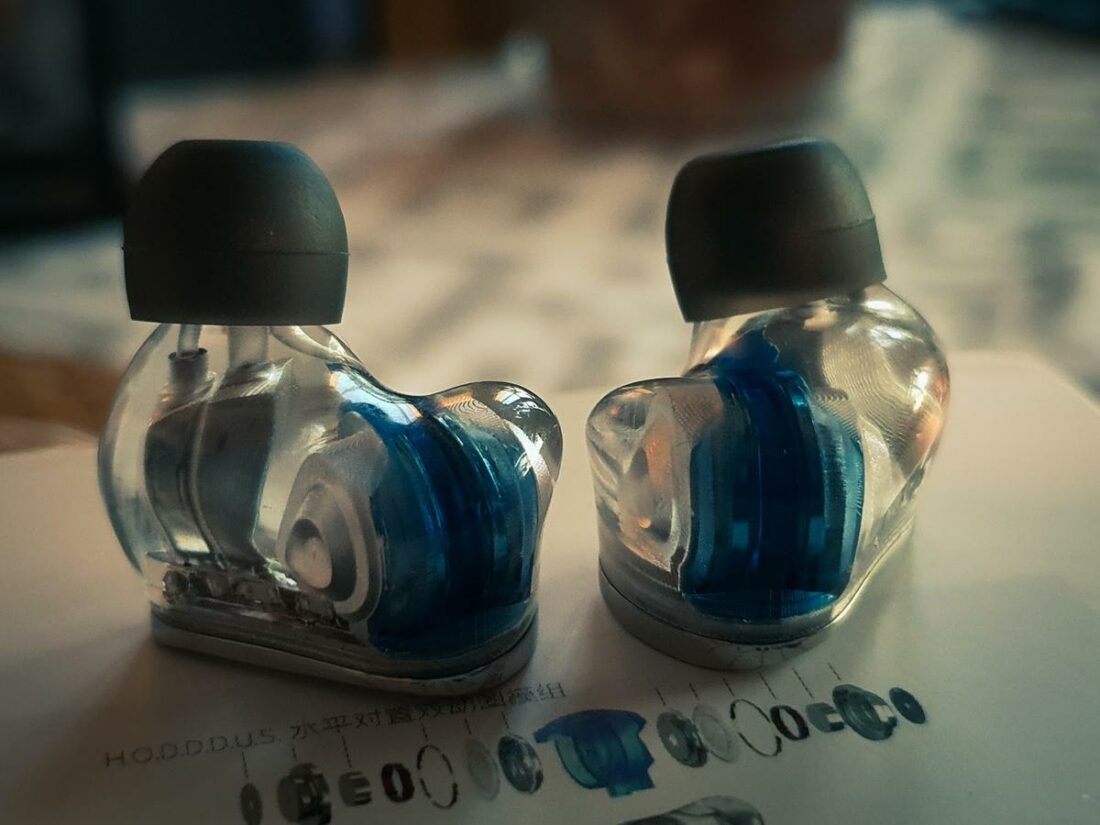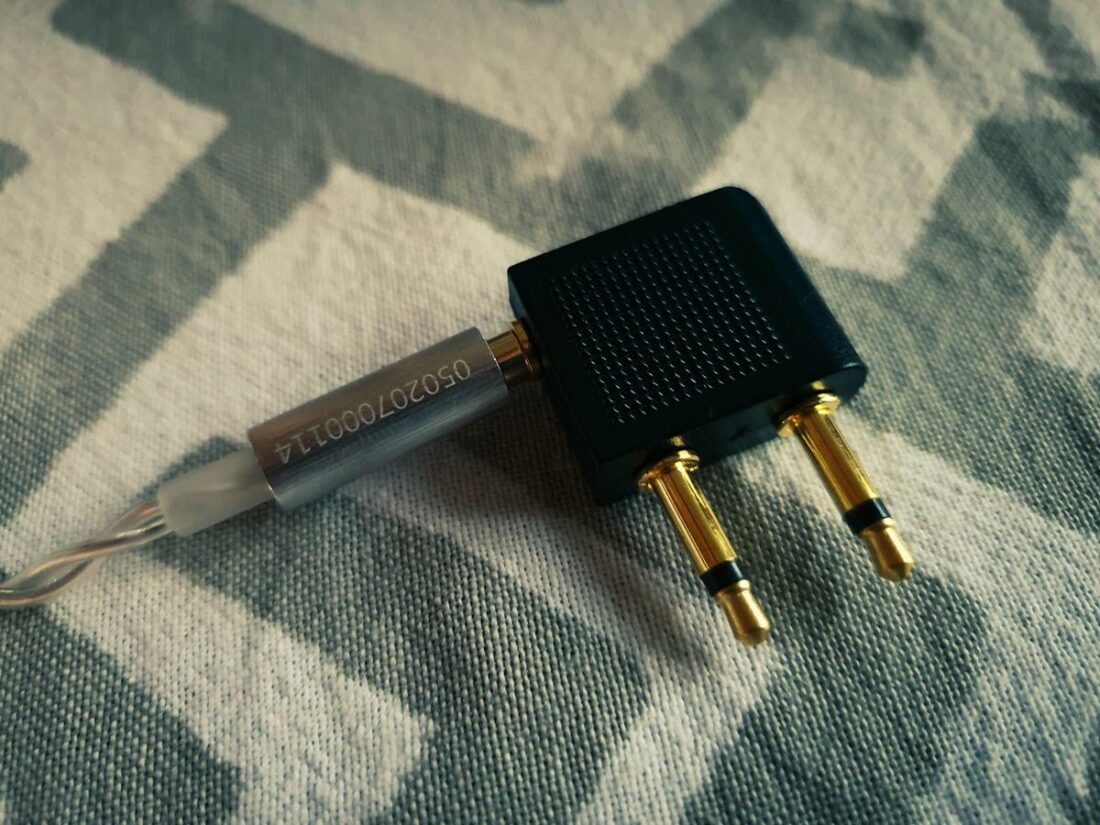Moondrop’s newest installment in the Blessing lineup excels in technicalities yet falls flat in timbre and dynamics.
Go to just about any headphone enthusiast community, ask for the best price-performance IEM and most people will point you to the Moondrop Blessing 2 or Blessing 2 Dusk. It’s difficult for me to refrain from calling the Blessing 2 the “HD650 of IEMs”— an easy recommendation, in other words.
The Blessing 2 and, even more, the Blessing 2 Dusk wowed the market with very on-point tuning and great technical capabilities. The few detractors usually pointed to issues with comfort (chunky nozzles) or a general dislike of balanced armature timbre.
- Clean and tight low end
- Very good resolution throughout
- Great imaging capabilities
- Take EQ’ing very well
- Superb build quality
- The super thick nozzles are gone
- Good comfort
- Looks sleek
- An upper bass suckout kills dynamics
- Emphasized upper mids cause shoutiness
- The faceplates are a fingerprint magnet
- The ear tips are prone to slip off
- A multi-connector cable would have been nice
Read on to find out whether the Blessing 3 fills the gargantuan shoes left by their predecessor or ends up being the HD660 to the HD650 – an awkward side grade instead of a proper heir. Or even an HD700?
Technical Specifications
- Form: Vented shell universal hybrid IEM
- Drivers: 2 dynamic + 4 balanced armature, dynamic drivers: 2x in a horizontally opposed module, balanced armatures: 2x midrange, 2x treble
- Crossover: passive electronic 3-way
- Sensitivity: 120dB/V (at 1kHz)
- Frequency Response: 20 – 20 000Hz (-3dB)
- Impedance: 14.8Ohm ±15% (at 1kHz)
- Total Harmonic Distortion: ≤0.5% (at 1Khz)
- Cable Entry: 2 pin 0.78mm
Packaging
The waifus are back! Try as I might, I couldn’t recognize the likeness of any prominent audio reviewer immortalized in the image of a petite anime girl. The overall theme of the packaging is white, which works fine for my taste.

Build-wise, the box feels great – the physical design is well thought out and built. I love that the lid keeps open as a fold-out piece supports it. Inside the box, one finds a bit more than usual paperwork, a nice pleather case, and the Blessing 3 IEMs themselves.

The white pleather case works nicely to house the Blessing 3 while on the go. It’s spacious enough so that you don’t need to do cable origami to stuff everything in there. I can fit my Qudelix 5K Bluetooth DAC there as well.
In the box
- Moondrop Blessing 3 IEMs
- Silver-plated copper cable
- Storage bag
- Aviation adaptor
- Silicone ear tips (S/M/L)
- QC certificate
- Manual
- Anime-themed postcard
Design
Like the Blessing 2 before, the Blessing 3 sport translucent medical acrylic shells with a steel faceplate. This time instead of a brushed finish, Moondrop has opted for a mirror look. It catches light nicely. The 3D-printed acrylic works well and doesn’t show ear grease with use.
The mirror faceplates are absolute fingerprint magnets.

Reportedly the nozzles on the Blessing 3 have somewhat shrunk, compared to their predecessors. This should broaden their appeal as there were comfort complaints. The nozzles have three sound bores from each array of drivers.
My only complaint is that the outside doesn’t have a lip, and ear tips might slip off.

I find the cable bundled with the Blessing 3 is more than satisfactory. It’s not too microphonic and doesn’t tangle easily. Should one yearn for a balanced connection, the stock 3.5mm TRS jack can be snipped off, and a connector of one’s choice should be easy to solder on.
Comfort
On top of enjoying some tunes, I used the Blessing 3 on a film set where I pulled 12-hour shifts as a boom operator. While the shells are large, my ears didn’t mind having them in for the whole day. With medium-sized ear tips, the Blessing 3 securely stayed in my ears, and there were no pressure hotspots.

Internals
Like the Blessing 2, the Blessing 3 are a hybrid design that combines dynamic drivers for low-frequency reproduction and balanced armatures for mids and highs. The big difference this time is the H.O.D.D.D.U.S. – horizontally-opposed double dynamic driver module. It uses two 10mm paper cone drivers in a vibration-canceling arrangement.

Having twice the piston area down low gives interesting design options. Depending on the implementation, higher sensitivity, lower distortion, and better extension can be achieved. The opposing arrangement of drivers also cancels vibrational forces, although it’s up for discussion how relevant that’s for an IEM.

Moondrop doesn’t explicitly tell us who makes the balanced armature twin driver modules for the mids and highs. My guess is Knowles, as they’ve been used in Moondrop’s other IEMs. A combination of passive electronics and physical filtering is used to filter all of the drivers.
Blessing 3 Sound
Moondrop uses a VDSF (Virtual Diffuse Sound Field) target curve to tune their headphones, and judging by the frequency response graph on the back of the box, the Blessing 3 follow it quite closely. The rationale behind the VDSF curve matches the more known Harman Target, which can mean a generally enjoyable sound signature.

Tonal balance
Despite the claim that Blessing 3 closely follow Moondrop’s sound target, I do not find them neutral.
The overall tonality veers towards shoutiness in the upper mids and some leanness in mid-bass. For most of the music I listened to, this proved to be a major problem.
It is only with electronica when Blessing 3 feel at home, as the front stage is given to sub-bass and synthetic instruments, which suffer less from timbre weirdness. In many ways, this gave me flashbacks of multi-way IEMs of the past, like the Ultimate Ears TripleFi 10. Technically proficient, yet marred by balanced armature timbre.
Technicalities
The Blessing 3 have very impressive technical performance.
The IEMs seem to have pretty low THD across the audible range, as no kind of muddiness can be heard even at high SPLs. The tonal discrepancies keep the Blessing 3 from showing their muscles in this regard even more.
Imaging and headstage are decently pronounced as well. Give the Blessing 3 the right recording, and they will deliver a performance to remember. While front-to-back space isn’t as grand as with something like the Sennheiser HD800S, lateral staging is precise and impressive.
Bass
With two dynamic drivers on board, I expected the Blessing 3 to shine in the lower registers. What I got was a bit of a mixed bag. The very low end is clear, tight, and extended, with little to complain about.
Starting from about 100Hz is where the trouble starts.
Up until 400Hz, a recessed region robs impact from most music. I’d say it’s about -3dB too low, which makes percussive instruments and strings lose their slam.
Moondrop probably tried adding a nice shelf in the lows without muddying up the lower mids. However, in this case, it has backfired. The warmth region is also affected in addition to the blunted impacts, which makes the overall sound rather clinical.
Mids
The recession that starts from 100Hz seeps into the lower mids.
It mainly affects the “fullness” region, making the mids sound pretty anemic. Again – this is most obvious with real instruments as their fundamentals and lower harmonics fall into this region.
Right from 400Hz, my gripes with the mid-frequency reproduction end. The next two octaves are very neutral with no problems. Technically, the mids are clean, ooze resolution, and would be pleasant to listen to if not for the low-mid problems.
Treble
The other major fault I found with the Blessing 3 is in the low treble range, around 3kHz.
For my tastes, it’s around 3dB hotter than I’d like, which imbues the general sound character with shoutiness. More energetic music like rock or metal made the onset of ear fatigue much earlier than I’m used to.
The upper treble is fine for me. Decently resolving, with only well-tuned electret modules surpassing the Blessing 3. The overtones had the right amount of sparkle to give the Blessing 3 a good sense of space and resolution. Just like the mids, the top octave performance left me very pleased.
EQ
The excellent technical performance of the Blessing 3 makes me think they can be superb candidates for corrective EQ. I fixed the bass/lower mid and lower treble tonal problems with some tinkering. Here’s my PEQ for a 10-band setup:
- 100 Hz Gain -0.5 dB Q 0.500
- 280 Hz Gain 2.2 dB Q 0.600
- 360 Hz Gain -0.7 dB Q 1.600
- 1400 Hz Gain -1.1 dB Q 2.000
- 3200 Hz Gain -1.5 dB Q 2.000
- 5800 Hz Gain -1.8 dB Q 2.000
- 7000 Hz Gain 1.4 dB Q 0.900
- 8200 Hz Gain -5.7 dB Q 2.000
- 9600 Hz Gain 3.3 dB Q 2.000
- 11000 Hz Gain 3.8 dB Q 1.800
I won’t say it’s perfect, but it can be a great starting point. With the tonal problems out of the way, it is much easier to appreciate the good qualities of the Blessing 3.

Where to Buy
Conclusion
A brilliant pair of IEMs is buried somewhere in the Moondrop Blessing 3. Currently, idiosyncratic tuning keeps their excellent technical abilities from shining through at their fullest. They work fine for electronic music, but I recommend trying the Blessing 3 before buying.
Once EQ’ed, the Blessing 3 prove they can challenge IEMs of higher price brackets. The double dynamic driver array can deliver impressive performance once the upper bass suckout is fixed. The treble BA module can’t surpass a well-tuned electret but can get close.
I don’t think the Blessing 3 will enjoy the same safe recommendation status as their predecessor. The shouty and slam-shy tuning doesn’t work too well with most music. Luckily the Moondrop Blessing 2 Dusk are still available, and Crinacle has confirmed that Blessing 3 Dusk are coming, so there’s a good chance that we might not need EQ after all.
